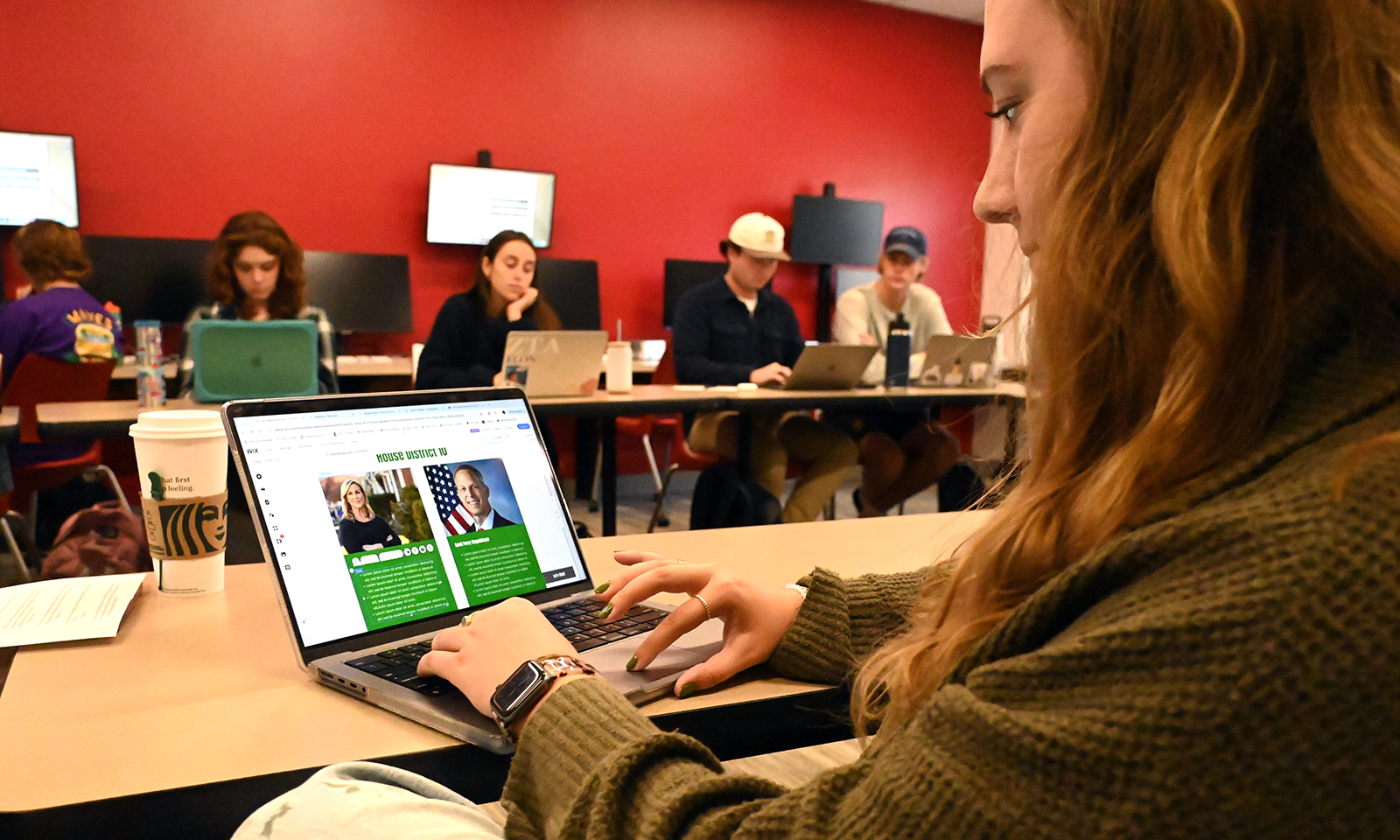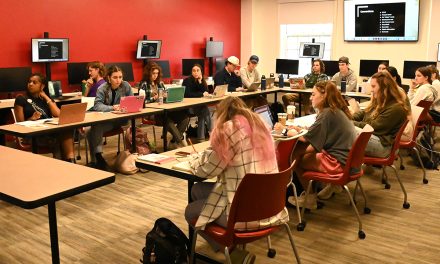Students in Associate Professor Amanda Sturgill's Multiplatform News Editing class developed a website offering issue-based information on candidates in states where many Elon students are registered voters.

For many young adults, their first chance at voting in a statewide or national election will come while they are in college. Since motor-voter laws have encouraged people to register to vote when they get their licenses in high school, students who study out-of-state can face a choice between absentee voting at home or re-registering in a new state where they may not understand the issues.
For Elon University students, Associate Professor of Journalism Amanda Sturgill’s Multiplatform News Editing class has addressed this issue by creating a student-centered voter guide for races in the states from which Elon draws the most students: Maryland, Massachusetts, New Jersey, New York, Pennsylvania and Virginia.

“Elon prides itself on having civic engagement in students, and a lot of students choose to vote at home,” said Sarah Moore ’26, a junior studying journalism. “We wanted to make sure there are resources on campus for students voting absentee at home, the same way there are for students voting in Alamance County.”
In September, the 18 students in the journalism class – with support from the Elon Votes initiative – began the project assembling focus groups of first-time voters. The editing students were trained in conducting the groups and led a discussion with the new voters on what issues mattered to them. Across the groups, gun rights and control, healthcare and abortion, housing and taxes, immigration, and climate change were the top issues.
The students identified the candidates who will be on the ballot for each statewide or federal level race and began an extensive process of finding the candidates’ positions on each of these issues. In some cases, it was as easy as visiting a candidate’s website, but other candidates were hard to track down requiring emails, phone calls and social media messages.
The challenges to access information surprised some students. “You’d think someone running for office would want people to know what they think,” said Moore, who served as the student director of the project, keeping up with more than 80 races.
The raw information went through two rounds of copy edits before putting it on the site.
The site, which went live on Nov. 1, is available here. It includes links to reliable news sources for each race, as well as candidate views on the issues students said they were interested in.


